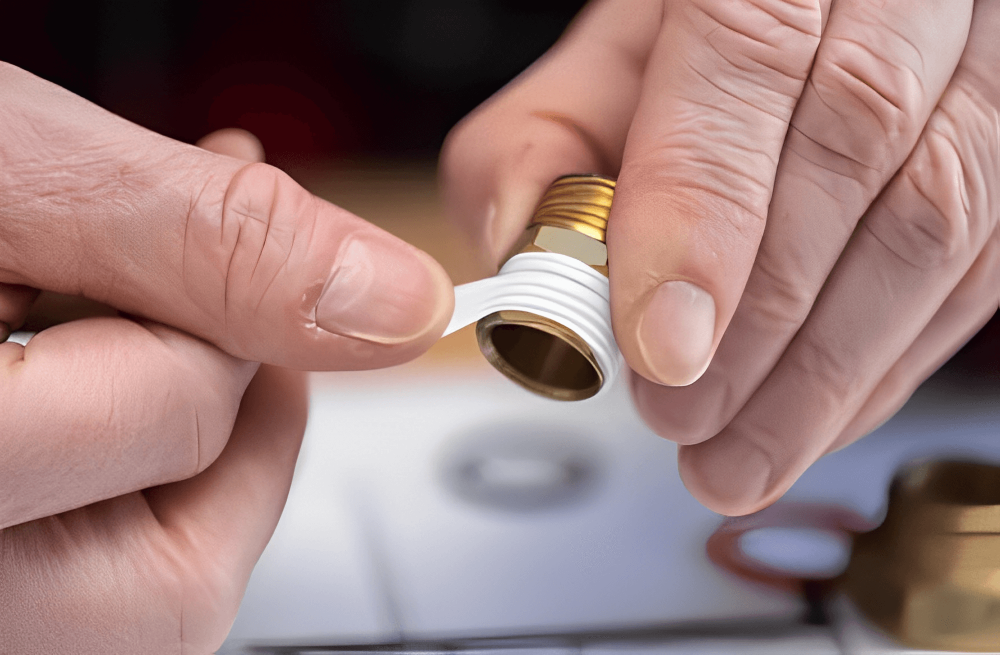NPT (National Pipe Taper) hydraulic fittings are widely used in various industries to create leak-tight connections between pipes and other hydraulic components. Properly sealing these fittings is crucial to ensure optimal performance and prevent fluid leakage, which can lead to costly downtime and potential hazards.
In this article, we will explore the importance of sealing NPT hydraulic fittings and provide a step-by-step guide on how to achieve a secure and reliable seal.
What are NPT Hydraulic Fittings?
NPT fittings are characterized by their tapered threads, which create a tight seal as they are tightened. The threads are designed to wedge against each other, making them ideal for high-pressure applications. These fittings are commonly used in hydraulic systems, fuel lines, and pneumatic applications.
Importance of Proper Sealing
Properly sealed NPT fittings are essential for several reasons:
Preventing Fluid Leakage
In hydraulic systems, even the smallest leaks can cause a significant loss in efficiency and performance.
Ensuring Safety
Hydraulic fluid leaks can lead to slippery surfaces, increasing the risk of accidents for personnel.
Avoiding Contamination
Leaks can introduce contaminants into the hydraulic system, potentially damaging sensitive components.
Enhancing Efficiency
A well-sealed fitting ensures the hydraulic system operates at its optimal capacity.
How do you seal NPT threads properly?
To properly seal NPT threads, follow these steps:
Step 1: Clean the Threads
Ensure the threads on both the fitting and the mating component are clean and free from debris, dirt, or old sealant residues. Use a suitable cleaning agent and a wire brush if necessary.
Step 2: Apply the Sealant
Select a high-quality thread sealant suitable for your specific hydraulic application. Apply the sealant to the male threads of the fitting. Be cautious not to over-apply, as excess sealant may end up inside the hydraulic system.
Note: Teflon tape or any other sealing materials can also be used to seal your threads.
Step 3: Assemble the Fittings
Carefully thread the NPT fitting into the mating component by hand. This ensures the threads align correctly and minimizes the risk of cross-threading.
Step 4: Tighten the Connections
Using a suitable wrench, tighten the fittings firmly but avoid over-tightening, as it can damage the threads or the fitting itself. Over-tightening may also lead to an uneven seal.
Step 5: Check for Leaks
After tightening the fittings, inspect the entire connection for any signs of leakage. If leaks are detected, disassemble the connection, clean the threads, and reapply the sealant before reassembling.
Common Mistakes to Avoid
➢ Using the wrong type of sealant for the hydraulic fluid being used.
➢ Overusing or underusing sealant, both of which can compromise the effectiveness of the seal.
➢ Neglecting to clean the threads thoroughly before applying sealant.
➢ Over-tightening the fittings, leading to damaged threads and potential leaks.
➢ Failing to check for leaks after assembly.
Choosing the Right Sealant for NPT Fittings
The choice of sealant depends on factors such as the type of hydraulic fluid, operating pressure, and temperature. It is essential to consult the manufacturer’s recommendations and select a compatible sealant that meets the specific requirements of the hydraulic system.
Tips for Maintaining Sealed NPT Fittings
➢ Regularly inspect fittings for signs of leaks or damage.
➢ Replace damaged or worn fittings promptly.
➢ Follow the hydraulic system’s recommended maintenance plan.
➢ Train personnel to handle and assemble NPT fittings correctly.
The Advantages of Using NPT Fittings
NPT fittings offer several advantages:
➢ Easy installation due to their tapered threads.
➢ Versatility in a wide range of applications.
➢ Ability to handle high-pressure environments effectively.
➢ Availability in various materials to suit different operating conditions.
Conclusion
Sealing NPT hydraulic fittings correctly is vital to the performance, safety, and efficiency of hydraulic systems. By following the proper sealing process and using high-quality sealants, you can ensure leak-tight connections and reduce the risk of downtime and hazards. Regular maintenance and adherence to best practices will maximize the lifespan and reliability of the fittings, contributing to the overall efficiency of your hydraulic systems.
FAQs
Q: Can I reuse the old sealant on NPT fittings?
A: It is not recommended to reuse old sealant, as it may have degraded and lost its sealing properties. Always clean the threads and apply fresh sealant for a reliable seal.
Q: How often should I check NPT fittings for leaks?
A: Regular inspection is crucial. Depending on the operating conditions, check fittings for leaks at least once a month or as recommended by the equipment manufacturer.
Q: Can I use Teflon tape instead of sealant for NPT fittings?
A: Teflon tape can be used, but it is essential to choose a tape suitable for hydraulic applications. Sealant is generally preferred for its ability to fill gaps and provide a more reliable seal.
Q: What sealant should I use for high-temperature hydraulic systems?
A: For high-temperature applications, look for sealants specifically designed to withstand elevated temperatures and compatible with the hydraulic fluid used.
Q: Are NPT fittings compatible with all hydraulic fluids?
A: NPT fittings are compatible with a wide range of hydraulic fluids, but it is essential to select the appropriate sealant that matches the specific fluid being used to ensure compatibility and effective sealing.
Q: Do NPT Fittings Need Sealant?
A: Yes, NPT fittings require sealant to achieve a reliable and leak-free connection. The tapering of the threads alone is not sufficient to create a perfect seal. Without sealant, there can be minute gaps between the threads, leading to potential leaks.
Post time: Aug-11-2023



